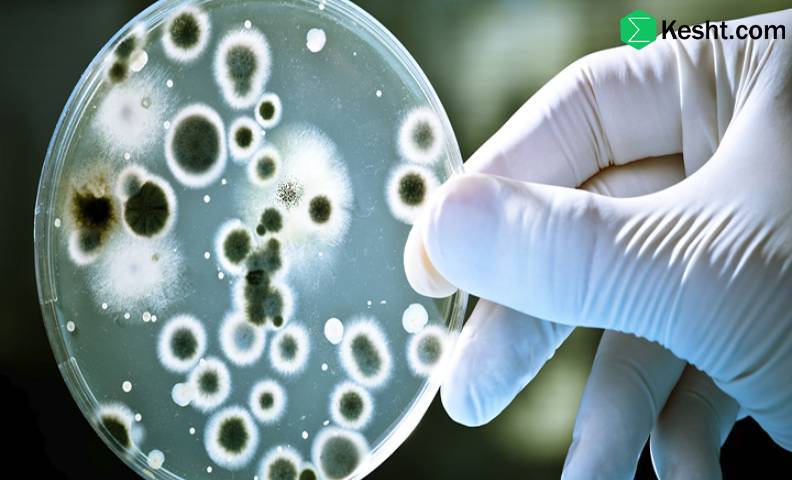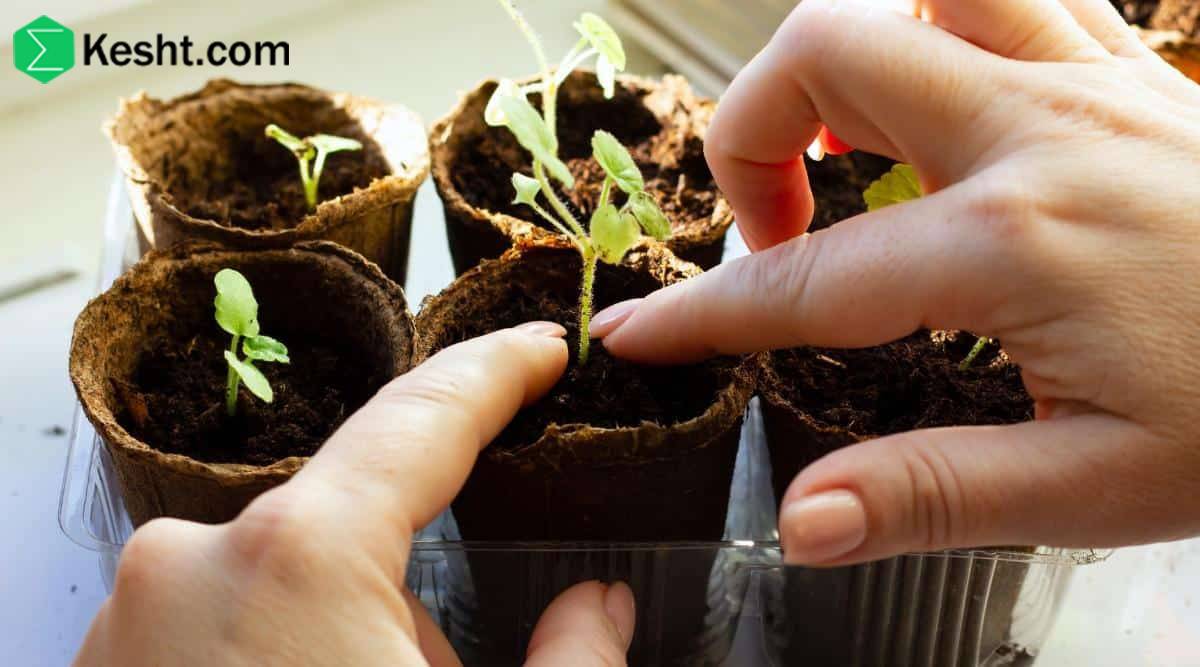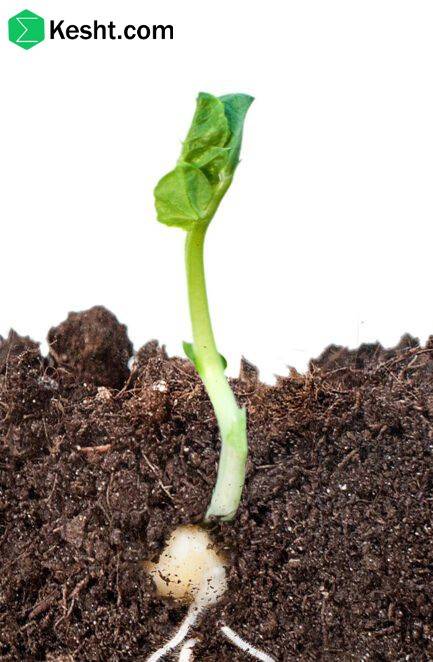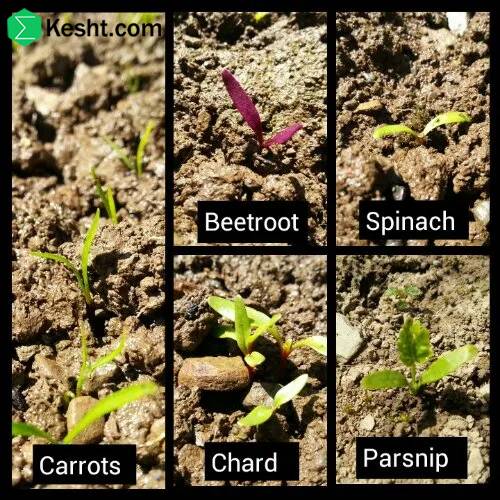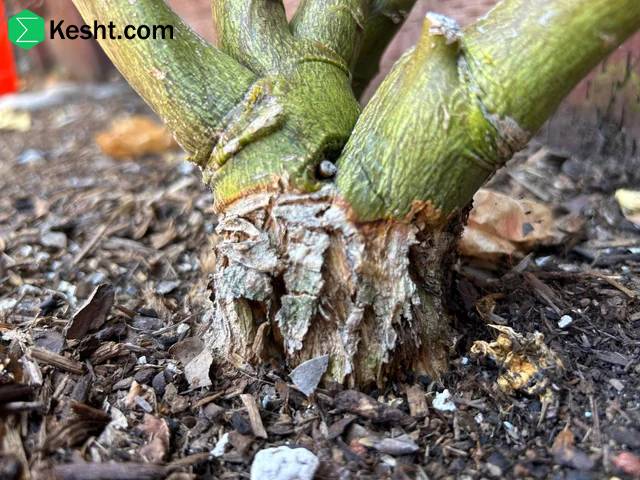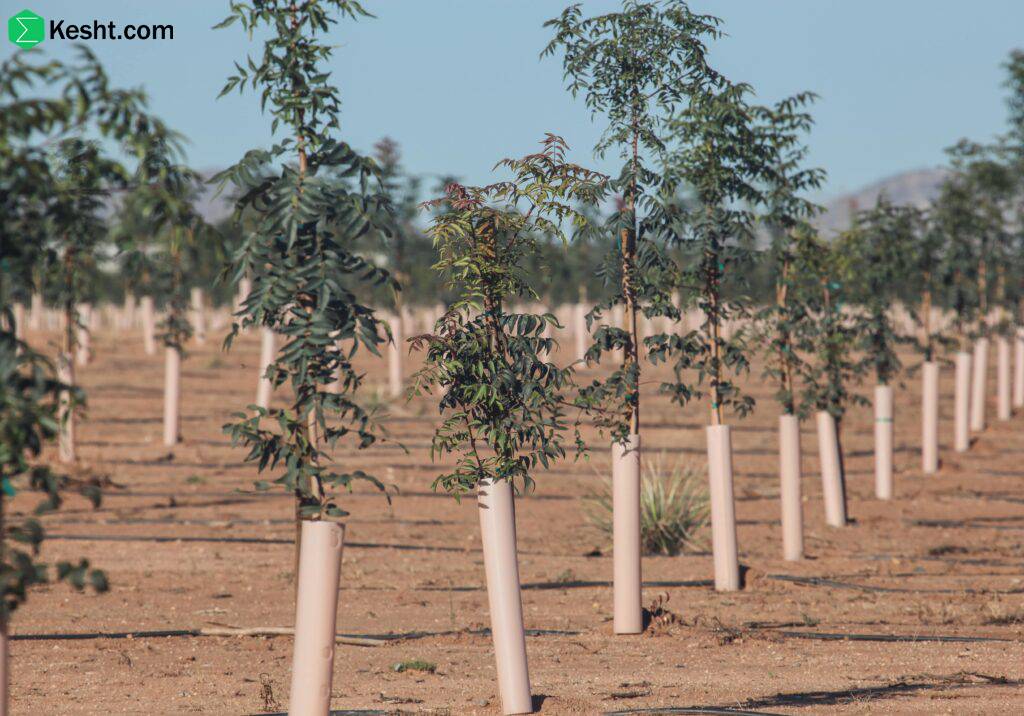summary of the common microbiological testing methods for seedlings
Microbiological Testing Methods for Seedlings
1. Microbial Culture
- Method: Sampling various tissues (roots, stems, leaves) and culturing them in nutrient media suitable for microorganism growth.
- Analysis: Observing the growth of microbial colonies and identifying the types of microorganisms.
2. PCR Testing (Polymerase Chain Reaction)
- Method: Using PCR techniques to detect specific microbial DNA. This method can identify bacteria, fungi, and viruses in plant samples.
- Advantages: High sensitivity and ability to detect non-cultivable microorganisms.
3. ELISA Testing (Enzyme-Linked Immunosorbent Assay)
- Method: Identifying specific microbial proteins by binding plant samples to specific antibodies, with color change indicating disease presence.
- Advantages: High accuracy and quick response time.
4. Microscopic Examination
- Method:Using a microscope to observe microorganisms in plant samples, aiding in the identification of fungi and bacteria.
- Advantages: Direct observation of microorganisms and identification of their types.
5. Biochemical Tests
- Method: Utilizing biochemical tests to identify specific characteristics of microorganisms, such as fermentation tests and enzyme production.
- Advantages: Identifying specific traits of microorganisms and determining their types.
6. Antibiotic Sensitivity Testing
- Method:Assessing the sensitivity of identified microorganisms to various antibiotics to determine the best treatment method.
- Advantages: Assists in developing disease control strategies.
These methods are essential for ensuring plant health and preventing disease transmission in agriculture.
For identifying fungal diseases in seedlings, several tests are particularly suitable. Here are the most appropriate options:
Recommended Tests for Identifying Fungal Diseases
1. Microbial Culture
- Description: This method involves collecting samples from various parts of the seedling (like roots, stems, or leaves) and culturing them in media suitable for fungi.
- Advantages: Allows for the identification and quantification of fungi present, and can also be used for testing sensitivity to fungicides.
2. PCR Testing (Polymerase Chain Reaction)
- Description: This technique identifies fungi using specific fungal DNA.
- Advantages: High accuracy and speed, enabling rapid identification of pathogenic fungi.
3. ELISA Testing (Enzyme-Linked Immunosorbent Assay)
- Description:This test detects specific fungal proteins.
- **Advantages:** Offers high sensitivity and can quickly determine the presence of specific fungi.
4. Microscopic Examination
- **Description:** Involves using a microscope to directly observe and identify fungi.
- **Advantages:** Allows for the observation of morphological characteristics of fungi, aiding in their identification.
Conclusion
Overall, microbial culture and PCR testing are typically the best options for identifying fungal diseases. Microbial culture provides real-time examination of fungi, while PCR offers high accuracy and rapid identification of pathogenic fungi.
list of the equipment needed for different microbiological tests to identify fungal diseases in seedlings
Required Equipment for Microbiological Tests
1. **Microbial Culture**
- **Culture Media:** Nutrient media suitable for growing fungi (e.g., agar).
- **Culture Plates:** Transparent containers for culturing samples.
- **Incubator:** For maintaining plates at the appropriate temperature and humidity.
- **Tweezers and Forceps:** For handling samples.
- **Microscope:** For observing microorganisms after culturing.
2. **PCR Testing (Polymerase Chain Reaction)**
- **DNA Quality:** DNA extraction kit for isolating DNA from samples.
- **Thermocycler:** Device for performing PCR.
- **Primers:** Specific sequences used to identify fungi.
- **Chemicals:** Such as Taq polymerase enzyme and deoxynucleotides.
- **Gel Electrophoresis:** For analyzing PCR results.
3. **ELISA Testing (Enzyme-Linked Immunosorbent Assay)**
- **ELISA Kit:** Includes specific antibodies for identifying fungi.
- **Microplate:** Container where the reaction occurs.
- **Spectrophotometer:** For measuring color intensity after the reaction.
4. **Microscopic Examination**
- **Microscope:** For direct observation of microorganisms.
- **Slides and Coverslips:** For placing samples under the microscope.
- **Stains and Dyes:** For staining microorganisms to facilitate observation.
5. **General Equipment**
- **Gloves and Masks:** For protecting staff from contamination.
- **Microbiological Safety Cabinet:** For working with safe samples and preventing cross-contamination.
- **Standard Laboratory Equipment:** Such as test tubes, pipettes, and balances.
The specific equipment required may vary based on the type of test and the scale of the experiment. For more precise and advanced testing, consulting with experts and laboratory equipment suppliers is advisable.
For preliminary diagnosis of diseases and microbial issues, several tests can be appropriate depending on the type of disease and conditions. Here are some suitable tests for initial diagnosis:
Recommended Tests for Preliminary Diagnosis
1. **Microbial Culture**
- **Description:** Helps identify bacteria and fungi in samples.
- **Advantages:** Allows for identification of existing microorganisms and determination of their types.
2. **PCR Testing (Polymerase Chain Reaction)**
- **Description:** Assists in detecting specific DNA or RNA of microorganisms.
- **Advantages:** High accuracy and rapid detection of specific diseases (such as viral infections).
3. **Microscopic Examination**
- **Description:** Direct observation of microorganisms using a microscope.
- **Advantages:** Enables direct observation of morphological features of microorganisms for identification.
4. **ELISA Testing (Enzyme-Linked Immunosorbent Assay)**
- **Description:** Used to identify antigens or antibodies in samples.
- **Advantages:** Suitable for detecting specific infections and viral diseases.
Conclusion
For preliminary diagnosis, **microbial culture** and **PCR testing** are typically the most suitable options. Microbial culture allows for the identification of bacteria and fungi, while PCR provides high accuracy and speed in detecting specific infections.
Samples Required for PCR Testing
For PCR (Polymerase Chain Reaction) testing, specific types of samples are typically needed:
1. **Plant Samples**
- **Leaves:** Sampling from both healthy and diseased leaves.
- **Roots:** To identify fungal or bacterial diseases in the roots.
- **Stems:** Sampling from various parts of the plant stem.
2. **Soil Samples**
- **Soil Around Roots:** To identify microorganisms in the soil that might harm the plant.
3. **Liquid Samples**
- **Plant Extracts:** In some cases, extracting from the plant can be useful for disease identification.
- **Irrigation Water:** If the irrigation water might be contaminated, sampling it can also be beneficial.
4. **Infected Samples**
- **Infected Parts:** If the plant is affected by a specific disease, sampling from the infected parts can be done.
Important Considerations
- *Sample Purity:** For greater accuracy, samples should be free from external contaminants. -
**Sampling Method:** Using sterile tools and following hygiene protocols during sampling is crucial.
The choice of sample type depends on the target disease and the type of microorganism you want to identify. For more accurate testing, it’s advisable to use a variety of samples.
--- ### Which Test is More Suitable for Identifying Soil Fungi?
To identify soil fungi, various tests exist, each with its own specific features. Below are the most suitable tests for identifying soil fungi:
1. **Microbial Culture**
- **Description:** In this method, soil samples are placed in culture media suitable for fungi to allow them to grow.
- **Advantages:** This test allows you to identify and count the fungi present in the soil. You can also use it to test sensitivity to fungicides.
2. **PCR Testing (Polymerase Chain Reaction)**
- **Description:** This method identifies fungi using their specific DNA.
- **Advantages:** It has high accuracy and speed, allowing for rapid identification of pathogenic fungi.
3. **Microscopic Examination**
- **Description:** Using a microscope, fungi can be directly observed and identified.
- **Advantages:** It provides the ability to observe the morphological features of fungi and identify their types.
4. **Biochemical Tests**
- **Description:** These tests are based on the biochemical characteristics of fungi. Microbial culture allows you to examine fungi under real conditions, while PCR offers high accuracy and speed in identifying fungi present in the soil.
Trade-offs in Disease Resistance: A study published in Proceedings of the National Academy of Sciences on April 4, 2025, by University of Maryland biologists, found that young plants face an evolutionary trade-off when developing disease resistance
[[1]](https://www.sciencedaily.com/releases/2025/04/250404201343.htm)
[[2]](https://e3.eurekalert.org/news-releases/1079523).
The study on Silene latifolia and its relationship with anther-smut showed that seedlings with stronger disease resistance produced fewer flowers and seeds later in life
[[1]](https://www.sciencedaily.com/releases/2025/04/250404201343.htm)
[[2]](https://e3.eurekalert.org/news-releases/1079523).
Male plants experienced higher costs for disease resistance than female plants
[[2]](https://e3.eurekalert.org/news-releases/1079523)
[[3]](https://cmns.umd.edu/news-events/news/researchers-reveal-why-young-plants-may-be-more-vulnerable-disease). Separating
Growth and Disease Resistance: Researchers at the University of Georgia have identified a method to balance disease resistance and growth in plants
[[4]](https://research.uga.edu/news/researchers-separate-plant-growth-and-disease-resistance/)
[[5]](https://news.uga.edu/researchers-separate-plant-growth-and-disease-resistance/).
By modifying cold-regulated genes, the plants maintained normal growth even with elevated levels of salicylic acid, which is known to enhance disease resistance
[[4]](https://research.uga.edu/news/researchers-separate-plant-growth-and-disease-resistance/)
[[5]](https://news.uga.edu/researchers-separate-plant-growth-and-disease-resistance/).
The Complex
Relationship Between Disease Resistance and Yield in Crops: A study in PubMed Central highlights that plants have basal immunity (PTI) and effector-triggered immunity (ETI), controlled by resistance (R) genes
[[6]](https://pmc.ncbi.nlm.nih.gov/articles/PMC11331782/). The study noted that a specific NBS-LRR
variant in A. thaliana makes plants less susceptible to S. sclerotiorum infection [[6]](https://pmc.ncbi.nlm.nih.gov/articles/PMC11331782/).
Acacia koa
Seedling Disease Tolerance: Research in Frontiers in Plant Science indicates that the size and status of a breeding population directly influences disease tolerance, vigor, and survivability in progeny seedlings
[[7]](https://www.frontiersin.org/journals/plant-science/articles/10.3389/fpls.2025.1544491/full) .
The study focused on Acacia koa, a Hawaiian endemic tree species, and its tolerance or resistance to infection by Fusarium oxysporum (FOXY)
[[7]](https://www.frontiersin.org/journals/plant-science/articles/10.3389/fpls.2025.1544491/full)
Resistance Research at the Dawn of the New Era :APS Journals discusses the utilization of host disease resistance as a sustainable approach to protect plants against pathogens
[[8]](https://apsjournals.apsnet.org/doi/10.1094/PHYTO-03-23-0108-FI).
The article highlights the importance of identifying and utilizing resistance mechanisms in plant breeding programs
[[8]] (https://apsjournals.apsnet.org/doi/10.1094/PHYTO-03-23-0108-FI)
Innovative Strategies for Plant Disease Resistance Breeding: An article in Frontiers in Plant Science summarizes strategies to improve plant defense against various diseases, including gene editing of host susceptibility (S) genes, editing promoters of host S or resistance (R) genes, and designing R gene products
[[9]](https://www.frontiersin.org/journals/plant-science/articles/10.3389/fpls.2025.1586375/full)
[[10]](https://pmc.ncbi.nlm.nih.gov/articles/PMC12133738/).
AI-Assisted
Breeding for Plant Disease Resistance: A review in *MDPI* highlights AI-driven advancements in plant disease detection, particularly convolutional neural networks, and their role in enhancing disease resistance
[[11]](https://www.mdpi.com/1422-0067/26/11/5324). Genetic
Resistance Against Disease in Vegetable Crops: Plant Physiology reviews recent advances in disease resistance studies in vegetables, covering species primarily grown and consumed as vegetables
[[12]](https://academic.oup.com/plphys/article/196/1/32/7682470).
The review emphasizes the importance of naturally occurring genetic resistance and the intricate defense mechanisms plants have developed
[[12]](https://academic.oup.com/plphys/article/196/1/32/7682470).
1. [Researchers reveal why young plants may be more vulnerable to disease - ScienceDaily]
(https://www.sciencedaily.com/releases/2025/04/250404201343.htm)
2. [Researchers reveal why young plants may be more vulnerable to disease - EurekAlert!]
(https://e3.eurekalert.org/news-releases/1079523)
3. [Researchers Reveal Why Young Plants May Be More Vulnerable to Disease | College of Computer, Mathematical, and Natural Sciences | University of Maryland]
(https://cmns.umd.edu/news-events/news/researchers-reveal-why-young-plants-may-be-more-vulnerable-disease)
4. [Researchers separate plant growth and disease resistance - UGA Research News]
(https://research.uga.edu/news/researchers-separate-plant-growth-and-disease-resistance/)
5. [Researchers separate plant growth and disease resistance - UGA Today]
(https://news.uga.edu/researchers-separate-plant-growth-and-disease-resistance/)
6. [The complex relationship between disease resistance and yield in crops - PubMed Central]
(https://pmc.ncbi.nlm.nih.gov/articles/PMC11331782/)
7. [Acacia koa seedling disease tolerance and vigor driven by breeding orchard size - Frontiers]
(https://www.frontiersin.org/journals/plant-science/articles/10.3389/fpls.2025.1544491/full)
8. [Plant Disease Resistance Research at the Dawn of the New Era - APS Journals]
(https://apsjournals.apsnet.org/doi/10.1094/PHYTO-03-23-0108-FI)
9. [Recent advances in innovative strategies for plant disease resistance breeding - Frontiers]
(https://www.frontiersin.org/journals/plant-science/articles/10.3389/fpls.2025.1586375/full)
10. [Recent advances in innovative strategies for plant disease resistance breeding - PMC]
(https://pmc.ncbi.nlm.nih.gov/articles/PMC12133738/)
11. [Artificial Intelligence-Assisted Breeding for Plant Disease Resistance - MDPI]
(https://www.mdpi.com/1422-0067/26/11/5324)
12. [Recent advances in the improvement of genetic resistance against disease in vegetable crops | Plant Physiology | Oxford Academic]
(https://academic.oup.com/plphys/article/196/1/32/7682470)
